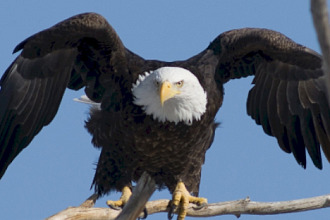A fox has all sorts of built-in equipment it can use or techniques for survival it can apply in case of emergency.
It may not be "right" for us, but it works for him! It is not by accident that a fox has body odor and, even if it could, should not buy deodorant... Nor should it take an extra bath to get rid of it! That "bad smell" is a smell of protection given it by its Creator not by accident for its defense! The fox has scentjjlands not only at the base of its tail, but evenj)n itsjace and feet. That may seem unpleasant to us, but other than at DreedirTg time,"aTox"seems to enjoy solitude anyway—so they must not mind! And they do give off such a dose of bad odor to a pursuing creature that the would-be predator turns and runs from this lightest-weight member of the dog family—just as they would if trying to avoid a mouthful of skunk!
Another interesting design specialty given the fox is their long legs and their small tummies. That is the design for speed. Notice humans who take up running: You won't see a belly paunch on a successful long-distance runner in the human family. A fox has the ability to run steadily 30 miles an hour. It's another not-by-accident gift when a fox is chasing one of its favorite menu items like a rabbit that can run in spurts about 35 mph, making almost instant U-turns. The hungry fox would be defeated, except its steady speed at 30 mph wins out in the long chase. Speed, agility and endurance is the name of the game. Link that with their nighttime hunting where their eyes which were vertical slits like a cat in the daytime not by accident at night also have been given special layers that help collect the light, and are able to widen to absorb even the least illumination. Also, again not by accident, foxes have whiskers with tips so sensitive they are able to maneuver around in pitch darkness when seeking a meal. There is another skill among these dogged predators closing in on a meal. Not by accident the fox is as capable as any house cat in waiting until they have pinpointed the exact location of their prey (perhaps hiding under a pile of leaves). With hearing, sight and even their bushy tail all involved in preparation for the well-aimed pounce, the fox, like the cat, will freeze and then launch itself often at a 45° angle and land exactly upon its victim! The meal was almost guaranteed because its huge tail was maneuvered like a rudder and not by accident gave the fox deadly accuracy! But some researchers have observed an interesting side note. The fox at times seems to prefer eating fruit as much as rats or rabbit, and will even choose fruit over meat, when both are available!
The fox involved in a chase can move its ears to catch the slightest noise made by its potential prey. But depending on where the fox lives, its ears come in a variety of sizes and shapes. It's all part of its not-by-accident equipment design. One fascinating example of Creative design can be seen in the tiny kit fox of the desert. Now if you as a human lived in a desert as does the tiny kit fox, you'd probably want adequate air conditioning equipment, right? But the desert fox can no more buy a portable a.c. then can a fox with a bad smell purchase deodorant! BUT, not by accident, God, their Designer, took pity on the kit fox of the desert and attached an air conditioning unit onto their heads! But it does not look like our a.c. units! It's their ears, which are just enormous when compared to the size of the rest of its body. (If a six-foot-tall human had ears in proportion to its body as are the size of the ears of the desert kit fox, the human's ears would probably hang down around his waist! That would seem pretty strange to us, wouldn't it?) The reason the ears of a desert fox are so large is because that is where the Creator placed the cooling system for the little fox. The heat that builds up in its body escapes through it's big ears! So that is why we're calling its ears an "attached a.c. unit." It's a convenient survival solution only a loving Creator would dream up for those tiny animals. And the little kit fox of the desert also has been given fur on its feet that helps keep it cool and comfortable for scampering across scorching desert sand! It is truly a rare mammal that can survive year-round in the desert, but God gave it instincts that help it to know how to obtain water from the meat of the bodies of little animals and insects it catches, as well as from the plants it consumes. Not by accident, that fox is built to survive where it lives!
Perhaps one of the most attractive parts of the body of a red fox, and in fact all foxes, are their full and furry tails. The ength of their tail is equal to half again the length of their head and body together. It is truly beautiful to watch when they are signaling or using their tail as a wrap-around keeping out the arctic chill, or positioning their body for an accurate launch while in full predator mode. Incidentally, remember what good runners they are with their long legs and tiny tummies? That tiny tummy is part of a motivation plan for the fox to have frequent meals. That way these usually solitary creatures with the bad odor don't stay in one spot long. They are often on the prowl seeking their next meal, not realizing they are aiding humans in destroying the rat population. The list at times seems endless about their unique dietary habits and not-by-accident appointed characteristics and instincts. (The fact that there are some foxes that are even known to store food for emergencies just tells us once again how their Creator is not caught by surprise in matters relating to His creation!
The Creator is ours as well, and we can ask Him to help us when we need a creative solution to our problems. Logically, if He loved the fox that He created enough to put within some of them wisdom to store food ahead of time for emergency use, won't He let us know what to do if we ask Him for wisdom when we have an emergency? After all, He loved humanity enough to become one of us, to save us when we were hopeless and helpless. He'll surely help us individually, even before we are hopeless, and He comes up with some pretty amazing solutions for us too—even ways to escape when we see no way at all. We just need to
Picture originally found here


























